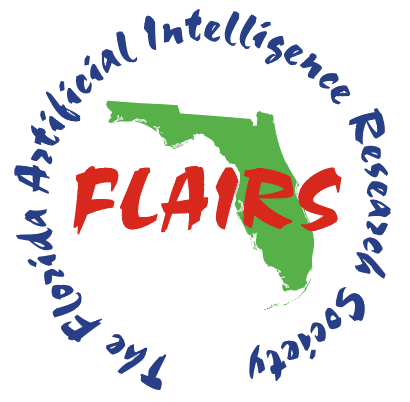Moving to Advanced Research on Human Machine Interface Design
DOI:
https://doi.org/10.32473/flairs.37.1.135458Abstract
This poster paper will discuss a variety of items related to Human-Machine Teaming and research in support in-creasing control of autonomous machines present in phys-ical problem domains of interest. Many military tasks can be decomposed into their primary elements – intelligence preparation, reconnaissance, movement, maneuver, fires, and and support across the combat domains of interest – air, land, sea, etc. There are an increasing number of au-tonomous and semi-autonomous ground-based systems available, such as the Multi-Utility Tactical Transport (MUTT) Unmanned Ground Vehicle, for movement of materials, or Quadrupedal Unmanned Ground Vehicle (QUGV) for the disposal of explosive ordinance, comple-mented by aerial platforms considering of a wide variety of Unmanned Aerial Systems (UAS) for the gathering and transmitting of information, held together by a common backbone and network.
The preponderance of new systems and capabilities brings new issues, one of which is critical to research - how to control and manage a large number of systems. Commercial systems of significantly less capability, such as light-up drone shows, involve approximately 2 people per 100 drones; meaning that a single controller for a sin-gle drone is simply a non-starter. How can research be applied to scale the complexity of operations upwards without additional demands of personnel?
This poster discusses several portions of early-stage research into a variety of applications, including:
- Reasoning about mixed-team processes, includ-ing real/synthetic teammates, and how infor-mation gathered about the use of synthetic teammates within simulation can be transitioned into utilization for a robotic teammate
- Embedding affective information into dialogue channels in order to save cognitive bandwidth
- Repurposing of foundational dialogue models for specific tasks and purposes
- Utilizing psychological research to design sys-tems in order to infer user intent
- Theory of mind research for autonomous systems regarding their human operators
- Simulated environments and agents in order to test the simulations in representative areas.
- Common-Sense reasoning augmented by Large Language Model technology for instructing ro-botic platforms
The following things will be discussed at the poster ses-sion, representing a portfolio of ongoing work addressing the problems of large-scale multi-agent command and control. While the near-term application of these tech-nologies is into military problem domains; the poster presentation is cleared for public release.
Downloads
Published
How to Cite
Issue
Section
License
Copyright (c) 2024 Keith Brawner

This work is licensed under a Creative Commons Attribution-NonCommercial 4.0 International License.


